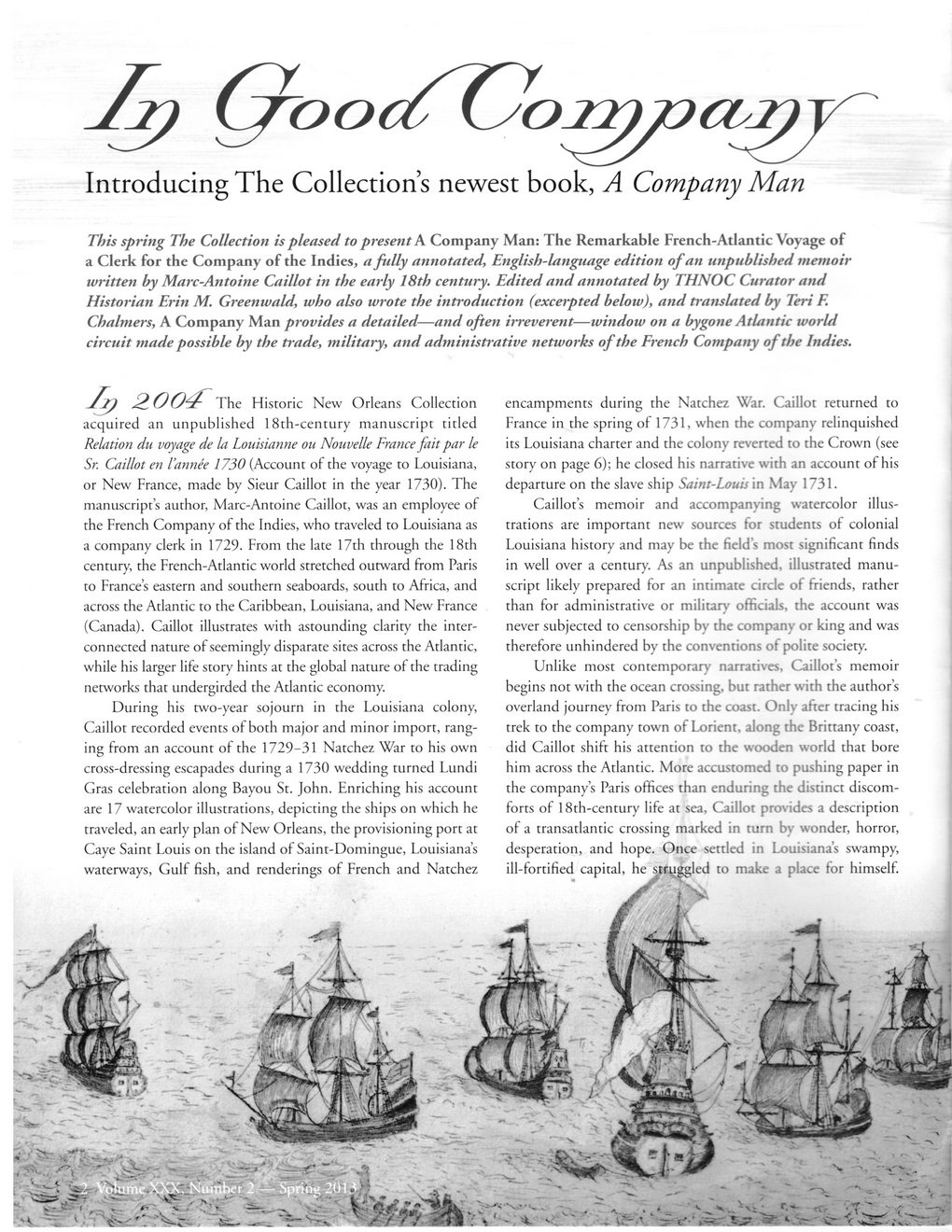This text was obtained via automated optical character recognition.
It has not been edited and may therefore contain several errors.
& oo Introducing The Collections newest book, A Company Man This spring The Collection is pleased to present A Company Man: The Remarkable French-Atlantic Voyage of a Clerk for the Company of the Indies, a fully annotated, English-language edition of an unpublished memoir written by Marc-Antoine Caillot in the early 18th century. Edited and annotated by THNOC Curator and Historian Erin M. Greenwald, who also wrote the introduction (excerpted below), and translated by Teri F. Chalmers, A Company Man provides a detailed—and often irreverent—window on a bygone Atlantic world circuit made possible by the trade, military, and administrative networks of the French Company of the Indies. A? 200The Historic New Orleans Collection acquired an unpublished 18th-century manuscript titled Relation du voyage de la Louisianne ou Nouvelle France fait par le Sr. Caillot en I’annee 1730 (Account of the voyage to Louisiana, or New France, made by Sieur Caillot in the year 1730). The manuscripts author, Marc-Antoine Caillot, was an employee of the French Company of the Indies, who traveled to Louisiana as a company clerk in 1729. From the late 17th through the 18th century, the French-Atlantic world stretched outward from Paris to Frances eastern and southern seaboards, south to Africa, and across the Atlantic to the Caribbean, Louisiana, and New France (Canada). Caillot illustrates with astounding clarity the interconnected nature of seemingly disparate sites across the Atlantic, while his larger life story hints at the global nature of the trading networks that undergirded the Atlantic economy. During his two-year sojourn in the Louisiana colony, Caillot recorded events of both major and minor import, ranging from an account of the 1729-31 Natchez War to his own cross-dressing escapades during a 1730 wedding turned Lundi Gras celebration along Bayou St. John. Enriching his account are 17 watercolor illustrations, depicting the ships on which he traveled, an early plan of New Orleans, the provisioning port at Caye Saint Louis on the island of Saint-Domingue, Louisiana’s waterways, Gulf fish, and renderings of French and Natchez encampments during the Natchez War. Caillot returned to France in the spring of 1731, when the company relinquished its Louisiana charter and the colony reverted to the Crown (see story on page 6); he closed his narrative with an account of his departure on the slave ship Saint-Louis in May 1731. Caillot’s memoir and accompanying watercolor illustrations are important new sources for students of colonial Louisiana history and may be the fields most significant finds in well over a century. As an unpublished, illustrated manuscript likely prepared for an intimate circle of friends, rather than for administrative or military officials, the account was never subjected to censorship by the company or king and was therefore unhindered by the conventions of polite society. Unlike most contemporary narratives, Caillot’s memoir begins not with the ocean crossing, but rather with the author’s overland journey from Paris to the coast. Only after tracing his trek to the company town of Lorient, along the Brittany coast, did Caillot shift his attention to the wooden world that bore him across the Atlantic. More accustomed to pushing paper in the company’s Paris offices than enduring the distinct discomforts of 18th-century life at sea, Caillot provides a description of a transatlantic crossing marked in turn by wonder, horror, desperation, and hope. Once settled in Louisiana’s swampy, ill-fortified capital, he struggled to make a place for himself.

New Orleans Quarterly 2013 Spring (02)